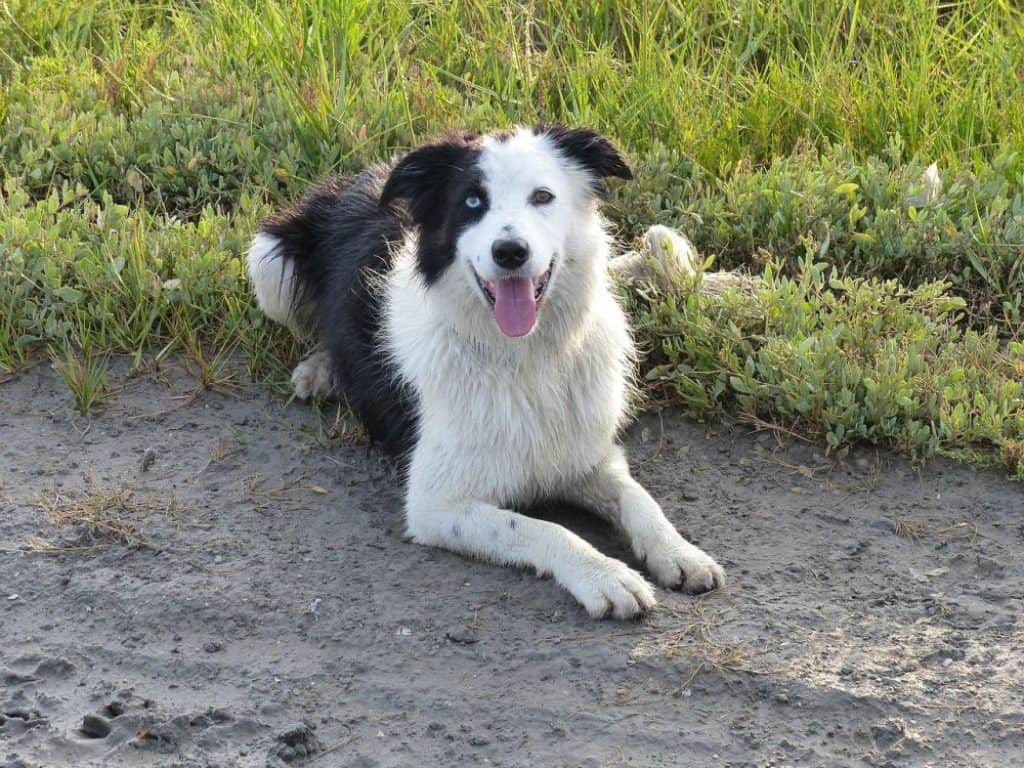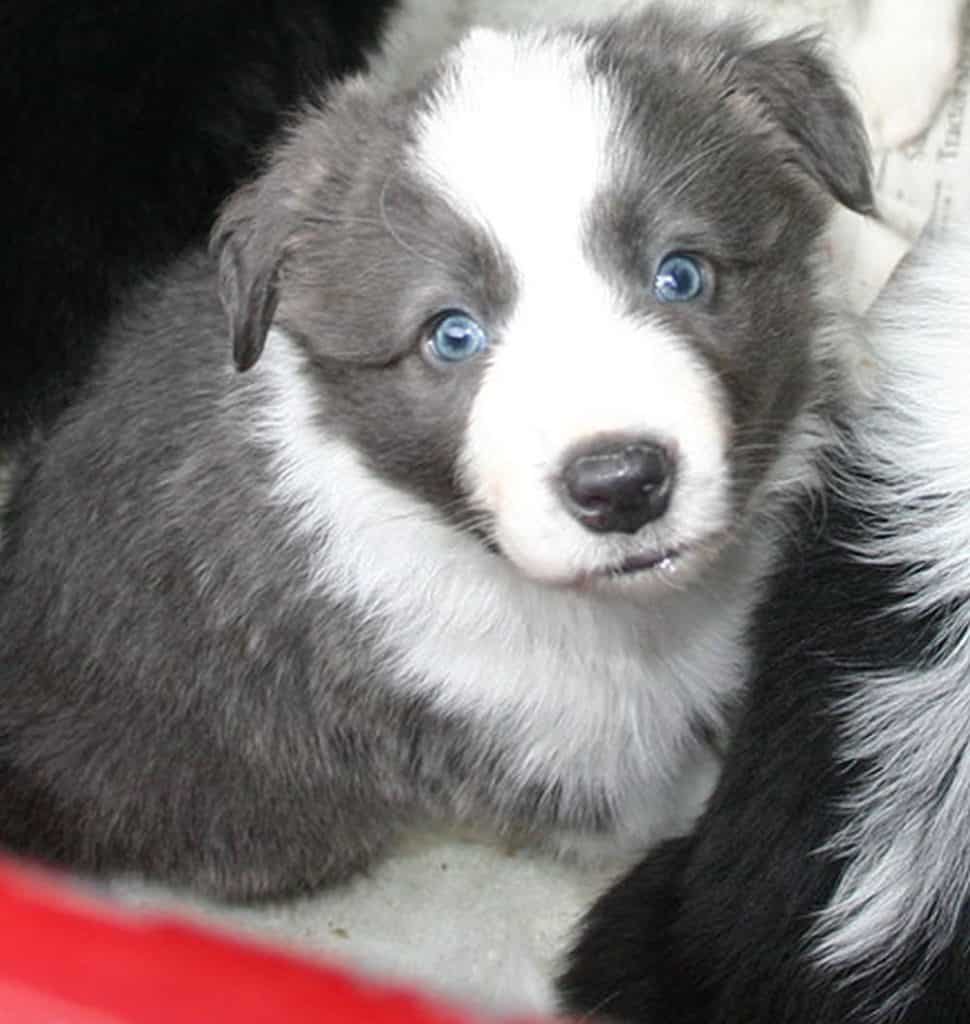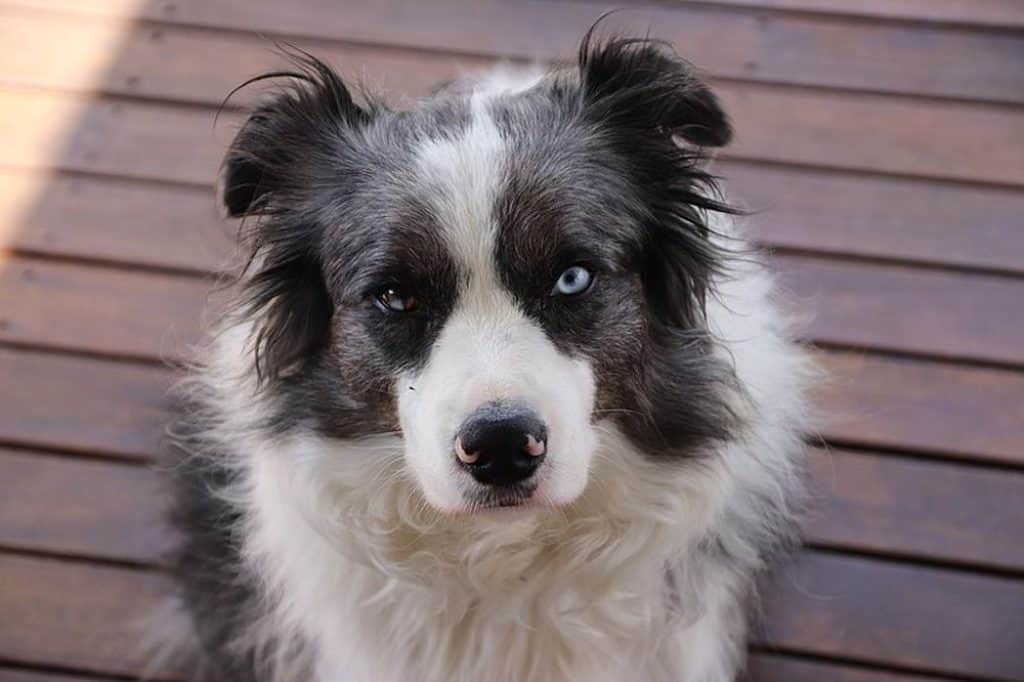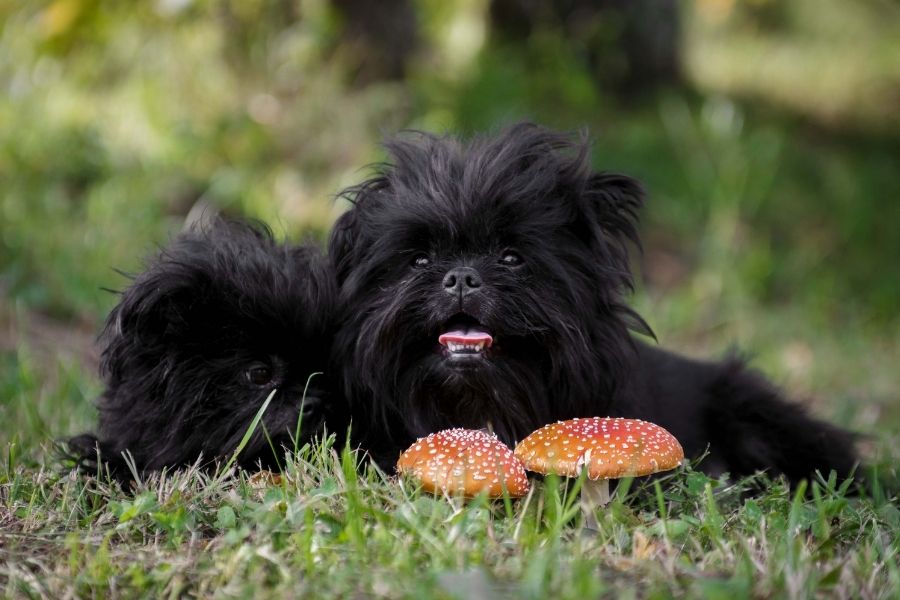Due to the lack of sufficient Border Collies breed information, especially when it comes to the eye’s colors, it is pretty common for people to wonder if a border collies’ eyes can be blue.
So, whether your furry buddy’s eye(s) just turned blue or you have noticed a change in your friend’s Border Collie’s eye color, and you are wondering (just like many people), can border collies have blue eyes?
Then worry not as this article got you fully covered as we provide you with science-backed answers on all you need to know about blue eyes in this sturdy and energetic dog breed.
So, let’s dive in!
[wpsm_toplist]
Can Border Collies Have Blue Eyes?

Yes, Border Collies (BC) can have blue eyes, which are also called ‘watch or glass eyes.’
However, this rarely occurs as most Border Collies have amber, brown (most common), golden, light-yellow, or dark brown colored eyes.
Rarely can a BC have a green eye color, which is usually hard to differentiate from yellow.
The merle-coated (a coat color pattern that is bluish or red-gray typically mixed with splotches of reddish-brown or black markings) Collies typically have an increased incidence of having blue eyes.
When a BC has mismatched eyes (when the eyes have 2 colors in one or both eyes, predominantly blue), it’s said to have Merle-eyes. A medical condition known as complete heterochromia.
Why Does My Border Collie Have One Blue Eye?
This is a common feature that occurs in different border collies breeds and also other dog breeds like the; Huskies, Dalmatians, Beagles, Dachshunds, Welsh Corgis, and the Alaskan Malamutes.
Your Border collie may have one blue eye due to inheriting this trait from its parents or due to genetic mutations in the gene that is responsible for its eye color.
Fun fact
In the past, if a Border Collie had 2 different eye colors, it was considered to be a valuable asset to the owner (who was primarily a cattle rancher) as they believed; one eye-controlled the herd close by, whereas the other eye-controlled the herd at a distance.
At What Age Do Border Collie’s Eye Color Change?

Generally, your pup’s eyes are fully open when it’s around 14-21 days.
And since most dogs are born with blue eyes (due to a lack of melanin) or gray eyes (though this happens rarely), it’s quite normal for dog parents not to pay close attention to their dog’s eye color.
At around 4-5 weeks, your pup’s eye color begins to gradually change their color due to exposure to UV light and the maturation of the cells that produce melanin(melanocytes) in its iris.
But if your pup’s color hasn’t turned to a not blue hue at around 9-12 weeks, then it is official that you will be a dog parent to a gorgeous permanently blue-eyed Border Collie.
What Eyes Colors Can Border Collies Have?
Below is a list of the most common eye colors Border Collies have;
- Amber-midway orange and yellow
- Mismatched or Merle-eyes-often one of the eyes must be blue
- Dark brown
- Light brown
- Golden
- Blue
What Are The Causes Of Heterochromia In Border Collies?

The Amount Of Melanin Produced
Melanin is a natural pigment produced in every living animal that gives color to skin, hair, and eyes.
Melanin concentrations in your dog’s iris (the colored part of the eye) can vary depending on exposure to UV lights, hormonal changes, and the age of your dog.
Two terms have been used to categorize the amount of melanin present in your dog’s iris;
- Hypochromic-lack of melanin which causes your dog’s eyes to turn blue or green(rarely)
- Hyperchromic-excessive production of melanin that causes your dog’s eye to be almost dark in color
When there is an incomplete distribution of this naturally occurring pigment in your doggy’s iris, it causes it to have bi-colored or multicolored eyes.
Diseases
Below are some of the medical conditions known to cause heterochromia among Border collies;
Viral Infections
Viral infections can also cause your doggy to have different colored eyes.
One virus that seems to ace at changing your canines’ eyes is the Canine adenovirus type 1, which mainly affects your dog’s liver.
This condition is usually treatable if presented to a vet before it becomes severe.
You can also prevent your doggy from acquiring this almost life-threatening medical condition through vaccination.
Method of transmission is through coming into contact with a dog or an object(s) that the virus has contaminated.
Signs and symptoms that you should look for if you suspect your hound is exposed to this viral disease include;
- Excessive tearing in your Border Collie’s eyes
- The cornea assumes a blue color
- Jaundice-yellowing of your dog’s inner cheeks and gums, paws, or eyes
- Poor feeding
Note the signs and symptoms start manifesting 7-10 days after your dog has been exposed to this virus.
It is crucial that you immediately take your hound to a vet if you suspect it came into contact with an infected canine or object.
Glaucoma
This is a treatable group of eye conditions that usually damage the dog’s optic nerve to the extent that when medical intervention is not sought early, the dog may become permanently heterochromatic and may also go blind.
Some of the signs and symptoms that a dog ailing from this disease shows, include;
- Your hound’s cornea (the transparent part of the eye) appears to be cloudy
- Squinting-your dog seems to have its eyes half-closed/opened
- Your dog keeps rubbing its eyes-usually due to pain
- Excessive tearing
- Avoiding the light
Waardenburg Syndrome
This is a group of genetic disorders (caused by your dog’s genetic makeup) that may or may not cause hearing, vision, and pigment abnormalities in your dog’s eyes.
This condition may be congenital or acquired.
Parents Genetic Makeup
When it comes to heterochromatin in a pup’s it is usually due to a dominant gene passed down(heredity) by the parent(s) who also mismatched eyes.
It can either be acquired (the dog changes its eye color(s) during its lifetime) or congenital (the pup is born with this condition).
When it comes to hereditary heterochromia 3 variations have been identified by scientists, which include;
- Complete-one eye color is entirely different from the other
- Sectoral-a part of the hound’s eye is blue, and the rest of the eye is a whole different color
- Central-the iris appears to be multicolored
Other Causes Of Heterochromia In Border Collies Include;
- Bleeding in an eye due to vasculitis (inflammation of blood vessels)
- Entry of a foreign object in your dog’s eye-may be grass blades, dirt, thorn
- Medications such as hyperosmotic and beta-blockers which are used to treat glaucoma in dogs
- Physical injury to your hound’s eye
Do Border Collies With Heterochromia Have Health Problems?
When the heterochromatic condition is not caused by any underlying medical conditions like the Waardenburg syndrome (which causes hearing loss and vision problems), the heterochromatic dog generally has no health problems.
These doggies usually have a visual acuity of the same level as dogs with both eyes of the same color.
They also enjoy a happy dog life risk-free of diseases so long as they are fed with the proper nutrition and get physically stimulated through exercising, just like dogs with unicolored eyes.
Key Takeaway
Research has shown that most dogs, Merle, White, Dapple, and with increased white patterns around their neck, are prone to having heterochromatic eyes.
It is important to note that a number of dog breeds, not just the Border Collie, also share the same eye color condition.
Such dogs include the; Huskies, Dalmatians, Beagles, Dachshunds, Welsh Corgis, and the Alaskan Malamutes.
Almost all pups are born with blue eyes due to a lack of melanin production until they are 4-5 weeks old.
If your pup’s blue eye color hasn’t changed at around 9-12 months old, then it’s certain that your doggy will have blue-colored eyes even when it is an adult.
Note some medical conditions such as glaucoma, Waardenburg syndrome and canine adenovirus type 1 viral infection, which affects your hound’s liver, may cause your Border Collie’s eye to turn blue.
Ensure that you regularly take your Border Collie for specialized eye checkups, as this sturdy dog breed is prone to eye conditions that may substantially reduce their life quality.
Don’t forget to adopt your hound from a well-known and licensed breeder in order to enjoy living with a healthy border Collie dog breed.





